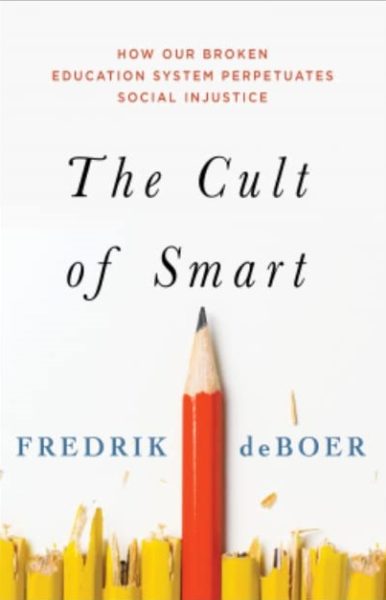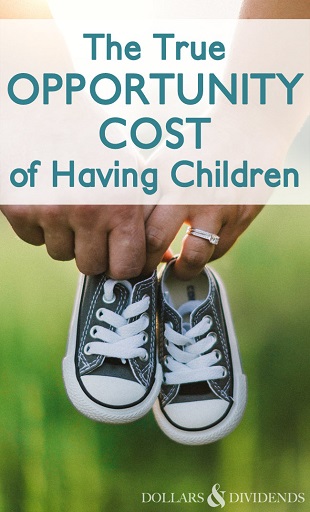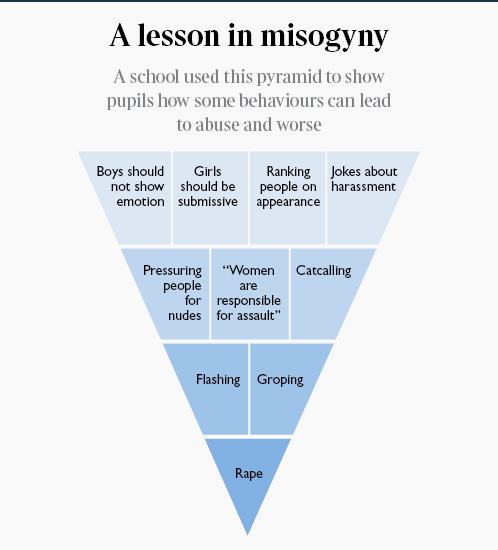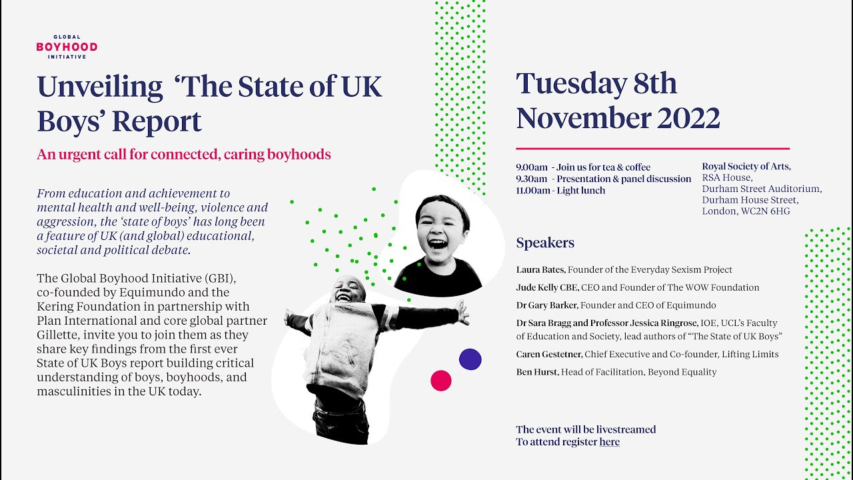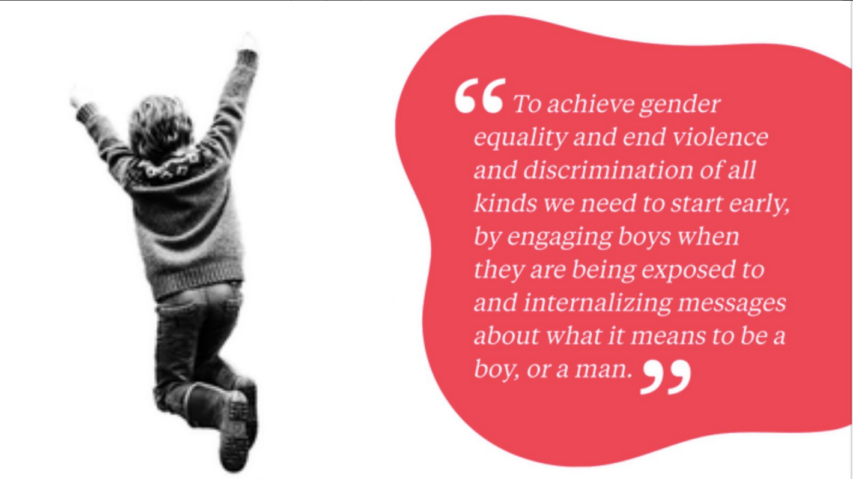Back when there were still a few grownups in charge, it was understood that kids are, in fact, kids, and that a major part of healthy socialization is performing a kind of differential diagnosis on your identity — if I’m not this, then I must be that, until you finally realize that you’re more than any of them, or all of them put together. Younger readers will have to take it on faith that this was possible, but I myself was, at one point, a preppie, a jock, a skater, a Goth, a burnout, and I think I’m forgetting a few. If that seems dubious, then this will really blow your circuits: I went out for, and made, the baseball team even though I didn’t particularly like baseball and wasn’t particularly good at it.
30 years ago, that kind of thing wasn’t just possible, it was pretty easy, since Little League was still about silly stuff like having fun, and when high school coaches gave you the speech about teamwork and character building, he — get this — actually meant it. I know how crazy this sounds, but it was pretty much expected of us benchwarmers to take the piss out of the kid who carried on like he was some kind of Big League prospect. Nobody but parents came to the games, anyway, and wearing a letter jacket didn’t help you get girls (I tested this hypothesis extensively). Nowadays, of course, Little League squads are ruthlessly culled, and if you make the team, you’d better be ready to be put on a nutrition plan and workout schedule, to attend summer skills camps, to be no-shit scouted, by professionals, at an age where you’re still not really sure what girls are for.
You don’t get to be “a jock” for a semester, in other words. You are one, and that’s all you are, starting before puberty, and woe to the kid who only made the team because his hormonal clock was set a little ahead of the other boys’. The kid who can throw 75 at age ten, as we all know, is 99.8% certain to still be throwing 75 at age sixteen, when everyone on the JV team can catch up to it. In my day, that’s when the coach pulled you aside and explained a few things to you, gently but firmly pointing you towards the Model UN Club. He was good at it, and since he was good at giving those “teamwork and character” speeches, too, he’d tell you that this, right here, is one of those situations, so man up and accept your limitations.
Ah well. So much for being a jock. Cross it off the list, and try not to notice the relief in Mom’s eyes — and, yeah, the little bit of sadness in Dad’s — when they realize they don’t have to schlep you all over the goddamn place on summer evenings, sitting in the bleachers watching you ride the pine. Time to find something else …
Severian, “Alienation”, Rotten Chestnuts, 2020-10-29.
April 4, 2023
QotD: We used to have this concept of “healthy socialization” for kids
March 27, 2023
The war against fertility
The effacement of women’s bodies is changing from a cultural signal to a battlefield maneuver. The acceleration of the presence of men as dominant participants in women’s sports, the growing intensity of casually monstrous blue zone attacks on families and parenting, the emergence of drag queens — men playacting as women, burlesque cartoons about sexual identity — as The Most Important Symbol Ever (and something children should definitely see) …
… and now this:
That’s footage from a Let Women Speak event in Auckland, New Zealand, where women arguing that “women” are “adult human females” were physically attacked by a mob of “transwomen” — by men — and their allies. It’s very progressive when men dressed as women silence women and hurt them. More here, also linked above.
In the opening paragraph of this post, you may have thought that one of the things I mentioned was different than the other things — that the blue state assault on families and parenting isn’t specifically gendered, and is equally an assault on the role of mothers and fathers. And it is. But.
It seems to me that the very very strange thing breaking out all over the world — or all over the Anglosphere, because I don’t see Nigeria and Peru and Singapore going all-in on transgendered everything — is loaded with subtext about a febrile loathing for fertility. In policy, we’re incentivizing childlessness, and disincentivizing childbearing. Birthrates are declining sharply, and were declining even before the mRNA injections, while blue state governments work on laws that tell would-be parents their children can vanish from their custody on political pretexts. Who has the future children while the state says that hey, nice family you have there, be a shame if something were to happen to it?
I suspect the reason so much hate and rage is being directed at women is that their bodies can produce babies, which means that the hate and rage is being directed at the future. Peachy Keenan, who’s all over this stuff in multiple forums, wrote recently about Hicklibs on Parade, describing “how deeply the postmodern, anti-human gender ideology has penetrated into what we used to call ‘middle America'”:
In Plano, Texas last fall, an “all-ages” drag brunch attracted some unwanted attention from people who thought they lived in a conservative state. At the brunch — which was held at Ebb & Flow, an eatery in an upscale strip mall — a buffoonish man in a dress wearing cat ears sings, “My p*ssy good, p*ssy sweet, p*ssy good enough to eat”, while flashing his underwear.
In the video from the event, a four-year old girl stares in shock as the “drag” performer twerks and grinds for the ladies in attendance.
The people in the crowd watching this man systematically strip away a little girl’s innocence look like nice friendly Texans; plump grandmas and families and the types you’d run into at the local Costco. They are not hipsters; they are not edgy. They look normal!
This is what makes all of this so striking. These slightly downmarket Texan and Midwestern prairie home companion women have, historically, been the only thing holding this rickety old country together.
March 21, 2023
Few professions are as “optimism biased” as primary school teachers
Freddie deBoer was commissioned to write this for a professional publication for teachers, but it was “too hot” for the editors, so he’s posted it to his Substack instead:
There’s a bias that runs throughout our educational discourse, coming from our media, academia, and the think tanks and foundations that have such sway in education policy. It’s a bias that exists both because of a natural human desire to see every child succeed and because the structural incentives in the field make rejecting that bias professionally risky. The bias I’m talking about is optimism bias, the insistence that all problems in education are solvable and that we can fix them if only we want to badly enough. At least a half-century of research, spending, policy experimentation, and dogged effort has utterly failed to close the gaps that so vex our political class. But still we hear the same old song about how we could close those gaps tomorrow if we really wanted to, an attitude that has distorted education policy and analysis for decades.
My first book, The Cult of Smart, was a commercial failure. It was released during the height of the pandemic and thus my ability to promote it was limited, but by any measure the market rejected it. It’s tough to produce a labor of love like that and find that few people were interested in it.
But there was a silver lining: since publication in 2020 I’ve heard from dozens and dozens of teachers, thanking me for putting their thoughts to print. These educators come from public, private, and charter schools, from schools with affluent study bodies and schools that are mired in poverty, from big city school districts and from low-population regional rural schools. And again and again, these teachers shared the same perspective: they agreed with the book’s overall argument, and often had thought similar things themselves for years, but felt they could not express them publicly for fear of professional consequences.
The essential argument of the book is that overwhelming empirical evidence shows that students sort themselves into academic ability bands in the performance spectrum early in life, with remarkable consistency; that the most natural and simplest explanation for this tendency is that there is such a thing as individual academic potential; and that the most likely source of this individual academic potential is likely influenced by genes. When we look at academic performance, what we see again and again is that students perform at a given level relative to peers early in schooling and maintain that level throughout formal education. (I make that case at considerable length here.) A vast number of interventions thought to influence relative performance have been revealed to make no difference in rigorous research, including truly dramatic changes to schooling and environment. Meta-analyses and literature reviews that assess the strength of many different educational interventions find effect sizes in the range of .01 to .3 standard deviations, small by any standards and subject to all sorts of questions about research quality and randomization. Even the most optimistic reading of the research literature suggests that almost nothing moves the needle in academic outcomes. Almost nothing we try works.
This implies that common sense is correct and that individual students have their own natural or intrinsic level of academic potential, which we have no reason to believe we can dramatically change. I believe that we can change large group disparities in education (such as the racial achievement gap) by addressing major socioeconomic inequalities through government policy. But even after we eliminate racial or gender gaps, there will be wide differences between individual students, regardless of pedagogy or policy. When Black students as a group score at parity with white students, there will still be large gaps within the population of Black students or white or any other group you can name, and we have no reliable interventions to make the weakest perform like the strongest.
My book’s argument is attractive to teachers because they’ve lived under an educational ideology that insists that every student is a budding genius whose potential waits to be unlocked by a dedicated teacher – and which holds teachers to that unachievable standard. From the right, they’re subject to “no excuses” culture, the constant insistence from the education reform movement that student failures are the result of lazy and feckless teachers; from the left, they’re subject to a misguided egalitarianism that mistakes the fact that every child is important and deserves to be nurtured for the idea that every child has perfectly equal potential. The result is a system that presses teachers to deliver learning outcomes in their classrooms that they can’t possibly achieve. But many of them feel that they can’t push back, for fear of professional consequences. If they speak frankly about the fact that different students have different levels of individual potential, they’ll likely be accused of shirking their duty.
March 1, 2023
School Lunch from the Great Depression
Tasting History with Max Miller
Published 28 Feb 2023
(more…)
February 27, 2023
“From nine or so I could memorise all the dates of the kings and queens of England … all of which proved hugely useful when it came to impressing the opposite sex in my teens”
The preview portion of an Ed West article on how history should be taught as black comedy rather than a morality tale:
I love history; it is my greatest passion. If I didn’t have to worry about money I’d go and live in a former Templar castle in the Languedoc and spend my afternoons reading 19th-century French historians (pretending to read in the original for my Instagram account, obviously, but actually using a translation).
From a very young age I was obsessed with the subject. The first history tale I remember being engrossed by was the story of Ethelred the Unready and Edward the Martyr. I suppose I felt some sort of nominative solidarity with Edward, the rightful king murdered by a wicked stepmother who then put her own son Ethelred on the throne — and who turned out to be the worst combination of both useless and backstabbing.
Of course, I later learned that the story was more complicated; Edward may not have been murdered, and Ethelred was dealt a very difficult hand. But as a child it sent my mind away to a far off place in a similar way that King Arthur first captured the imagination of many others. Like them, I was first attracted to history via the medieval world, with its kings, castles and sword fights, and its colourful jousts where fair maidens watched heroic knights beat the crap out of each other (although the early medieval had almost none of those things, but again, don’t let that ruin the fun).
There was obviously a very nerdy aspect to this. From nine or so I could memorise all the dates of the kings and queens of England (although I got a bit vague when it got as far as the Edwys and Edwigs), all of which proved hugely useful when it came to impressing the opposite sex in my teens.
Dates are not the most important thing, but for a certain type of mind they make it easier to connect everything. If I learned of an insane pope who liked to torture his cardinals or “Wenzel the Drunkard“, the German king fond of throwing enemies off bridges, I could put it in context that this was the time of Richard II, and it is easier to place. If I’m now reading about Chinese emperors or what was happening in the Umayyad caliphate, where the connection with England would be slim or non-existent, my understanding of English dates still makes it easier to understand.
I loved the fantasy and the expanded sense of imagination, but as I got older, I came to better appreciate the most beautiful thing about history, that it’s all one great black comedy, filled with petty emotions and motivations, and the psychodrama and human absurdity is not some side issue, but the whole point.
Yet the subject is never really taught like that, and perhaps can’t be; and the national history curriculum when I was at school seemed structured in such a way as to suck all the life out of it. It’s not just the incoherence or emphasis; everyone complains about what is taught at school, and no one will ever be satisfied. But worse was the way the subject was almost designed to make it as boring as possible. An area of study was introduced, and then almost immediately we were asked to evaluate the primary and secondary sources; the aim was to invite scepticism, but most teens and pre-teens simply drift off at this point.
Just tell us the story — we can deconstruct it later. Personally, I feel that history shouldn’t be primarily an analysis of how hegemonic power structures orchestrate public relations; it shouldn’t be a morality tale about good and evil; it shouldn’t be a means to make society more inclusive; it should be fun, and when done correctly, it’s the most fun subject in the world.
I’ve heard a lot of other folks’ complaints about how history was taught when they were in school, and it generally aligns with my own experience. The overall plan seemed to be to actively avoid anything that might interest the students (battles, treachery, romance, excitement in general) and instead concentrate on treaty negotiations, lists of dates, and any other dry-as-dust ways to fill the lecture time. As anyone can tell by the subjects I tend to include here on the blog, I’m a big history nerd, but I actively hated the topic in school even as I was reading history for myself outside of school hours.
Ed also recommends the brilliant podcast series The Rest is History with Dominic Sandbrook and Tom Holland (now also available on YouTube, which is where I started listening to it a few weeks back). I’d read several books by each of them, so it was quite a treat to discover they were co-operating on a history podcast that more than met my expectations.
February 21, 2023
“… sub-replacement fertility is probably an inevitable product of female emancipation”
In Ed West’s weekly round-up, he ends the post on this rather grim (from a demographic viewpoint) note:
In The Guardian, Martha Gill on the great vexation of modern life: people can’t have as many children as they’d like.
OK: so it’s about social structures, then? Lack of childcare, unequal parental leave and career penalties for mothers. Not so – or not primarily. In our fecund recent past, remember, career penalties for mothers were even higher. Mothers still suffer a career penalty almost everywhere, but attempting to remove it doesn’t seem to alter their decisions that much. Since 2008, amid unequalled progress in gender equality and some of the most generous parental support schemes on the planet, birthrates in Sweden, Norway and Iceland have fallen precipitously. Nordic countries are, comparatively, parental utopias, yet birthrates tick along slightly above the EU average and still well below the replacement rate.
I agree with her basic premise. Aside from Georgia, no country has successful brought fertility rates above replacement rates, whatever the childcare incentives, because sub-replacement fertility is probably an inevitable product of female emancipation. In particular the issue is that women don’t tend to marry men with lower education and income levels, so the modern system ensures that a large minority of men are simply unmarriagable.
I’m not convinced by Gill’s solution, since outcomes for the children of single parents are way worse on average, and even with huge state support it’s going to be incredibly hard to raise children alone. Even without grandparental support it’s hard with two parents. I also think this problem is inevitably helping the drive towards poly-acceptance. As Rob Henderson wrote earlier this month:
In a deregulated market, power laws dominate. This is true not only in the economic realm, but in the romantic realm as well. At no point in history have all men in a given society been equally desirable. Today, though, the disparity between men is particularly pronounced. And the gap shows no sign of slowing or closing. The polyamorous movement may be a reaction to shifts in sex ratios among attractive individuals. Many individuals who do not identify as poly are likely practicing some version of it, knowingly or otherwise, as the case of West Elm Caleb demonstrated. The majority desirable young males using dating apps almost certainly have at least three women in their rotation, if not more.
As with so many things, post-Christian society is reverting to pre-Christian norms, in this case the norm where a large proportion of men were thrown onto the romantic scrapheap.
February 19, 2023
February 10, 2023
“What’s happening to children is morally and medically appalling”
In The Free Press, Jamie Reed explains why she gave up her job as as a case manager at The Washington University Transgender Center at St. Louis Children’s Hospital and is now speaking out against the early and aggressive therapeutic treatment of gender-confused children and teens:
Soon after my arrival at the Transgender Center, I was struck by the lack of formal protocols for treatment. The center’s physician co-directors were essentially the sole authority.
At first, the patient population was tipped toward what used to be the “traditional” instance of a child with gender dysphoria: a boy, often quite young, who wanted to present as — who wanted to be — a girl.
Until 2015 or so, a very small number of these boys comprised the population of pediatric gender dysphoria cases. Then, across the Western world, there began to be a dramatic increase in a new population: Teenage girls, many with no previous history of gender distress, suddenly declared they were transgender and demanded immediate treatment with testosterone.
I certainly saw this at the center. One of my jobs was to do intake for new patients and their families. When I started there were probably 10 such calls a month. When I left there were 50, and about 70 percent of the new patients were girls. Sometimes clusters of girls arrived from the same high school.
This concerned me, but didn’t feel I was in the position to sound some kind of alarm back then. There was a team of about eight of us, and only one other person brought up the kinds of questions I had. Anyone who raised doubts ran the risk of being called a transphobe.
The girls who came to us had many comorbidities: depression, anxiety, ADHD, eating disorders, obesity. Many were diagnosed with autism, or had autism-like symptoms. A report last year on a British pediatric transgender center found that about one-third of the patients referred there were on the autism spectrum.
Frequently, our patients declared they had disorders that no one believed they had. We had patients who said they had Tourette syndrome (but they didn’t); that they had tic disorders (but they didn’t); that they had multiple personalities (but they didn’t).
The doctors privately recognized these false self-diagnoses as a manifestation of social contagion. They even acknowledged that suicide has an element of social contagion. But when I said the clusters of girls streaming into our service looked as if their gender issues might be a manifestation of social contagion, the doctors said gender identity reflected something innate.
To begin transitioning, the girls needed a letter of support from a therapist — usually one we recommended — who they had to see only once or twice for the green light. To make it more efficient for the therapists, we offered them a template for how to write a letter in support of transition. The next stop was a single visit to the endocrinologist for a testosterone prescription.
That’s all it took.
When a female takes testosterone, the profound and permanent effects of the hormone can be seen in a matter of months. Voices drop, beards sprout, body fat is redistributed. Sexual interest explodes, aggression increases, and mood can be unpredictable. Our patients were told about some side effects, including sterility. But after working at the center, I came to believe that teenagers are simply not capable of fully grasping what it means to make the decision to become infertile while still a minor.
February 4, 2023
QotD: Leftists against humanity
Yesterday in a group, a friend said what is obvious about the left is that they seriously oppose human reproduction and longevity. Ultimately human life, I guess.
Here’s the list as to why:
NOT AN EXHAUSTIVE LIST:
1) Pushing to maximize abortion
2) Pushing to maximize homosexuality
3) Multiple different initiatives to make child rearing more difficult and expensive including
a) Ramping up the intensity of social services scrutiny, effectively necessitating high intensity “helicopter parenting”
b) Turning schools into indoctrination factories that don’t prepare children to function independently but do prepare them to have constant fights with their parents over their indoctrination
c) Making healthcare more expensive through constantly ramping regulation, making the actual having of children more difficult and prohibitively expensive
d) Pushing to nationalize healthcare, granting them further power over who lives or dies – allowing limitation of IVF, and also
e) legitimizing legal euthanasia while also pushing to make healthcare decisions for the public (see Canada right now)4) Pushing from other regulatory angles to make the de facto standard a two-income family, ensuring children are raised in daycares and further pushing family budgets to the brink
5) Using the student loan system to turn the bulk of reproductive age, upwardly mobile people into collateral in a deal that passes billions of dollars directly from the US government to the same system that then indoctrinates those kids to the point of full societal dysfunction; encouraging, as much as possible, the use of sex as entertainment ONLY
6) Turning sterilizing yourself into the hot new fad for kids
7) Turning the simple identification of gender into a minefield so that even sex between people who aren’t mutilating themselves is suddenly difficult to even consider
8) Willfully manipulating nursing homes into putting elderly people in a position where they are MOST LIKELY to die during COVID
9) Adopting COVID policies which foreseeably shut down cancer diagnostics and treatment for almost two years, which is the most likely cause of the 10 fold increase in the rate of cancers since the COVID lockdowns (although I can’t entirely discount that the vaccines themselves are partially responsible because, sing it with me now, you can’t ensure the long term safety of something that hasn’t been around long enough to have long term safety data, which is why we do clinical trials and not mass experiments on the general public. I note in passing that the drug companies are so trustworthy they demanded legal indemnity as a condition of participating, while swearing blind that the product was safe and effective even though it was physically fucking impossible for them to have data to back that up due to minor problems like the requisite quantity of time not passing.)
Sarah Hoyt, “I Don’t Believe in Aliens”, According to Hoyt, 2022-10-31.
January 29, 2023
D.C. Public Schools – “if this were a corporation, it would be in liquidation. If it were a house, it would be condemned”
Andrew Sullivan on the latest PR campaign by the disaster that is the DC Public School system:
In my web-reading this week, I stumbled across two statistics that made me sit up straight. The first came from a devastating story last September about my home city’s public schools. I had just watched a slick new video from DC Public Schools about their new “equity” push, which aims to go “beyond students’ academics” and “call out inequities”. The video is full of vague-sounding pabulum — they never define what they mean by “equity”, for example, apart from invoking Ibram X Kendi’s term “antiracism” — but the message is very clear: “equity” is now the central focus of the school district. And it’s a bright new day!
Now check out the data on how the DC Public School system is faring. A key metric is what they call “proficiency rates” — a test of whether the kids are passing the essentials of reading and math at every stage of their education. Overall, only 31 percent of DC students have proficiency in reading and just 19 percent have proficiency in math. Drill down further in the racial demographics and the picture is even worse: among African-American kids, the numbers are 20 percent and 9 percent, respectively. Among black boys, it’s 15 percent and 9 percent. Which means to say that DC Public Schools graduate kids who are overwhelmingly unable to do the most basic reading and math that any employer would need.
This is not a function of money. In the most recent federal analysis: DC spends far more per student — $30,000 a year — than any other state, double the amount in many states across the country.
Let’s put it this way: if this were a corporation, it would be in liquidation. If it were a house, it would be condemned. But since it’s a public school system, it can avoid this catastrophic failure by emphasizing “equity”!
Call this the woke dodge. As they fail to educate kids in the very basics, they brandish a shiny object over there — “Diversity! Equity! Inclusion!” — to distract us. Or they claim that these scores are caused by “white supremacy” or “systemic racism”. Or they argue that now, they are educating “the whole child”. From the DCPS video: “The racial equity lens is a critical component of ‘whole child’ for us because being a whole child means thinking about all of your identities, but certainly the racial identity is a gap in what we’re discussing as a country.” Anything but do the basic job of teaching math and reading as they are supposed to do.
The truth is: they obviously can’t teach those subjects successfully. I’m sure many are good teachers doing their best, and some manage to rescue some of these kids, who often face terrible trauma in their homes and neighborhoods. But the data overall are damning. Imagine spending $30K a year on a student, any kid, in any country, and after 12 years, he still can’t spell or do basic math. It must be really hard to pull that off. And as a reward, you get a shitload of money from the city and the feds to keep it up. Criticize them? You’re a “white supremacist”.
Then there’s the other stat that blew my mind — on the post-BLM surge in murders of African-Americans, including many children. The rise in homicide has cooled off somewhat, as Robert Verbruggen notes. But check this out:
Between the 2018–2019 and 2020–2021 periods, the black homicide rate went up by about 40 percent and the white one by 15 percent — already a glaring disparity. But since the black homicide rate started out so much higher than the white one, this translated to an increase of just 0.4 per 100,000 for whites and 9.7 per 100,000 for blacks — nearly 25 times as large. The increase in the black homicide rate was greater than the total homicide rate for the nation as a whole.
Read that last sentence again.
January 17, 2023
How ideological programming in British schools make men like Andrew Tate inevitable
To be honest, I don’t think I’d ever heard of Andrew Tate before his legal troubles in Romania hit the headlines, and I’m not well-versed on his achievements (such as they might be). Janice Fiamengo also admits that Tate wasn’t on her radar before then, but she’s done some work to try to put him into perspective:
What has Tate got to do with UK education, except perhaps as a telling symbol of its unintended consequences? Why not just model and enforce ideals such as courtesy, self-restraint, and hard work, while upholding high academic standards? The article demonstrates how deeply committed schools have become to ideological programming. Some schools have drawn up “entire lessons focused on Tate” (!!!) while others deal more generally with “misogyny and gender stereotypes”. Whatever the particulars, the general message is unvarying: “We’ve all got to work collaboratively and collectively to support young men to reframe masculinity—away from this toxic ideology that’s presented by the likes of Tate.”
No one who’s been following the feminist narrative over the past decade or two will be surprised by the dogmatic reference to “toxic ideology,” now standard in any discussion of “reframing” boyhood. There is just one problem for the concerned teachers: Tate is five steps ahead of them, having already made clear to his millions of followers why injunctions about “reframing masculinity” are just code for the continual marginalization that most boys naturally want nothing to do with. The moment Tate and his allies expressed their scorn for the project, it lost its power overs the millions of boys forced to sit in feminist classrooms across the UK. Tate confirmed what boys intuitively knew: having their masculinity “reframed” will prevent them from pursuing masculine dreams, from being proud of themselves as male, admired by their male peers, and able to attract the interest of pretty girls. Teachers can keep on telling boys that peer approval through masculine moxy isn’t important, but that won’t make it true.
The point is not whether Tate’s (“I’ve got 33 cars“) program is an unalloyedly good one; the point is that it is manifestly better than the recipe for self-loathing and irrelevance being offered by the schools. The school’s program is the same that has been tried for years without any enthusiastic uptake because it offers nothing affirmatively male for young men to be and do (see especially White Ribbon UK, which has been trying for years to turn boys into handmaidens of feminism). All the normal things that centuries of boys in every major civilization on earth have cared about—competitiveness, status, toughness, mastery, knowledge, self-reliance, stoicism, high-jinks, displays of ability, and male bonding—are now frowned upon and must be replaced by feminine traits like empathy, egalitarianism, conformity, verbal display, and tone-policing. It doesn’t take a gender studies specialist to see that the life being offered these boys is one of deference, self-suppression, and self-contempt. No boy should want that.
In case you doubt my characterization, take a look at the Global Boyhood Initiative’s report on The State of UK Boys: Understanding and Transforming Gender in the Lives of UK Boys, published in 2022. The report was written for “teachers, youth workers, early-years practitioners and other professionals” to achieve “gender equity and social justice”.
Incidentally, the report includes a section attacking an alleged “overemphasis” on research showing boys and men as victims of intimate partner violence by women. While the report enthusiastically promotes the end of “gender” through transgenderism and social constructivism, it emphatically does not support the end of gendered norms about which sex is violent. On this front, the report laments that “even young boys” now believe that male persons can be victimized by female persons, citing the case of Johnny Depp’s abuse by Amber Heard. Nothing could more clearly signal the report authors’ chagrined awareness of the difficulty of controlling boys’ thoughts in the internet age.
The rest of the report explores pathways to weaken masculinity. On a number of occasions, it takes aim at “simplistic notions that boys require male ‘role models'” because such notions “frame women as inadequate to parent and teach boys”. Taking for granted that “gender is not tied to sex organs, hormones, or biological traits” (one wonders, then, why trans persons elect to take hormones and to change their sex organs), the emphasis throughout the report is on “realigning” masculinity to highlight gender fluidity, transgenderism, and inclusion of girls. The document has absolutely nothing good to say about masculinity, which it describes, variously, as “a seductive form of power”, “hegemonic”, and “oppressive”. It even uses the derogatory term “boysplaining” to stigmatize boys’ alleged way of talking.
Even such seemingly benign behaviors as “laughter, banter, and entertaining one another” are said to be “laddish” and linked to the exclusion of women and homosexuals. Taking pleasure in being good at sport is also given a negative valence by being associated with bullying.
As in all such feminist propaganda, the report seeks the evacuation of all positive content from masculinity. “Realigned” boys are to anchor their sense of self mainly in not being what boys have always been. They are to shun the allegedly “hegemonic” characteristics of “physical, sexual, and mental prowess; being action-oriented; ‘knowing’; having autonomy […]; and being emotionally tough.” It is surely no coincidence that modern boys and young men have fallen well behind their female peers in educational attainment, economic status, and performance on the job market. “Prowess” is out, knowing is out, being active is out, toughness is out. No wonder so many boys feel lost, disaffected, and resentful, and no wonder some see Andrew Tate as a hero.
January 10, 2023
Persuading women not to have families because it “helps the GDP”
In The Critic, Niall Gooch stands up for family life despite the regular hand-wringing articles pointing out just how “expensive” children are and how much money women forego in the working world to take time off and have a family, as if no other economic decisions in life have opportunity costs attached:
Every so often, a publication called something like Bosses Quarterly or Money Patrol will report a new study investigating the financial costs of having children. “Average child now costs £200,000”, they breathlessly inform us, or perhaps “Women Who Become Mothers Lose £400,000 In Earnings Over Their Lifetime”.
I have no idea how they generate these figures. Presumably they have at least some basis in proper empirical research. It doesn’t seem inherently implausible that middle-class parents in Britain spend well into six figures on their children one way and another, when you factor in childcare, holidays, clothes, food, transportation, birthday parties and university attendance. Raising children is undoubtedly costly, from a financial perspective, even if you are frugal. If my wife and I did not have children, our lifestyle would be considerably more affluent than it is at present. The “motherhood penalty” in lifetime wages does seem to be a real phenomenon – although it is one that many women are willing to accept.
But the accuracy or otherwise of the calculations is beside the point. There is something profoundly wrong-headed about the whole endeavour of trying to evaluate the good of family life in economic terms, or to treat the raising of children as simply one option among many in the great lifestyle marketplace. And yet many people persist with doing so. Sam Freedman, the policy analyst and writer, claimed on Twitter earlier this week, in defence of expanding subsidies for nurseries, that “it’s a lot cheaper for one person to look after several children than each parent to look after their own and not work”. This person noted “the long term impact on (nearly always) women’s career prospects which has a big effect on GDP”. He also argued against replacing subsidies to nurseries with direct payments to parents, noting that “giving money direct to parents would encourage people to leave the workforce when we need the opposite to happen”.
Even on its own terms, this is dubious. Low birth rates are a significant drag on economic growth, and making it harder for women to spend more time at home with their children is hardly conducive to increasing the birth rate. Besides which, there are big socio-economic problems connected to the modern norm of two parents working more or less full-time — house-price inflation for example, or the decline of communal organisations and lack of time for family caring responsibilities.
January 5, 2023
The injustices inherent in “asymmetrical multiculturalism”
Ed West traces the start of “asymmetrical multiculturalism” to a 1916 article in The Atlantic by Greenwich Village intellectual Randolph Bourne and traces the damage that resulted from widespread adoption of the policy:
“Asymmetrical multiculturalism” was first coined by demographer Eric Kaufmann in his 2004 book The Rise and Fall of Anglo-America, and later developed in his more recent Whiteshift, in a chapter charting Bourne’s circle, the “first recognisably modern left-liberal open borders movement”.
Kaufmann wrote how asymmetrical multiculturalism “may be precisely dated” to the article where Bourne, “a member of the left-wing modernist Young Intellectuals of Greenwich Village and an avatar of the new bohemian youth culture,” declared “that immigrants should retain their ethnicity while Anglo-Saxons should forsake their uptight heritage for cosmopolitanism.”
Kaufmann suggested that: “Bourne’s desire to see the majority slough off its poisoned heritage while minorities retained theirs blossomed into an ideology that slowly grew in popularity. From the Lost Generation in the 1920s to the Beats in the ’50s, ostensibly ‘exotic’ immigrants and black jazz were held up as expressive and liberating contrasts to a puritanical, square WASPdom. So began the dehumanizing de-culturation of the ethnic majority that has culminated in the sentiment behind, among other things, the viral hashtag #cancelwhitepeople.”
The hope, as John Dewey said of his New England congregationalist denomination around the same time as Bourne, was that America’s Anglo-Saxon core population would “universalise itself out of existence” while leading the world towards universal civilisation.
These ideas certainly didn’t remain in New England or even the United States, as Britain has certainly seen just how destructive they can be recently:
Late last year I wrote about the tragedy of Telford, a town in the English midlands where huge numbers of young girls had been sexually abused. Telford, along with Rotherham in South Yorkshire, had become synonymous with this form of sexual abuse, mostly committed by men of Kashmiri origin against girls who were poor, white and English.
This is the subject of an upcoming GB News documentary by journalist Charlie Peters, and it is quite clear, from all the various reports, that grooming had been allowed to carry on in part because of the different ways the system treats different groups.
Had the races of the perpetrators and victims been reversed, this tragedy would almost certainly be the subject of countless documentaries, plays, films and even official days of commemoration. But it wouldn’t have come to that, because the authorities would have intervened earlier, and more journalists would have been on the case.
Sex crime is perhaps the most explosive source of conflict between communities, and most recently the 2005 Lozells riots began over such a rumour. It is understandable why journalists and reporters were nervous about this subject; less forgivable is the way that, away from the public eye, those in charge signal how gravely they view what happened.
Until Peters revealed the story, Labour had planned to make the former head of Rotherham council its candidate for Rother Valley; this week Peters revealed that one of the councillors named in a report into the town’s failures to deal with the grooming gangs scandal has gone onto become a senior Diversity & Inclusion Manager working for the NHS. Presumably the people who hired Mahroof Hussain knew about his previous job, and still felt that it was appropriate to have him in a “diversity and inclusion” position. Again, were things different, would a Mr Smith whose council had been condemned for its handling of the gang rape of Asian girls have landed that job? The whole thing seems as morbidly comic as Rotherham becoming Children’s Capital of Culture.
Such a clear inconsistency can only exist because of socially-enforced taboos and norms which have developed over race. In Whiteshift, Kaufmann cited sociologist Kai Erikson’s description of norms as the “accumulation of decisions made by the community over a long time” and that “each time the community censures some act of deviance … it sharpens the authority of the violated norm and re-establishes the boundaries of the group”. Every time an individual is punished for violating the anti-racism norm, it strengthens society’s taboo around the subject, to the point where it begins to overwhelm other moral imperatives.
Then there is regalisation, the name for the process “in which adherents of an ideology use moralistic politics to entrench new social norms and punish deviance”, in Kaufmann’s words. This has proved incredibly effective; after paedophilia or sexual abuse, racism is perhaps the most damaging allegation that can be made.
Few people wish to be accused of deviance, which perhaps explains why Peters’s story has received so little coverage in the press this week. Again, were the roles reversed, it’s not wild speculation to suggest that it would feature on the Today programme, seen as clear evidence of racism at the heart of Britain. When the Telford story broke, it did not even feature on the BBC’s Shropshire home page.
December 24, 2022
The abiding influence of A Christmas Carol by Charles Dickens
So many of our fading-but-still-fondly remembered Christmas traditions seem to come back to Victorian times, and especially those featured in Charles Dickens’ most famous Christmas story (certainly helped by the popularity of the Alistair Sim film adaptation):
Even in our supposedly rationalist secular era, we find one of these thin places or times in the unlikely guise of Christmas and its rich repository of ghost stories. The supernatural was not banished by the developments of modernity but rather it evolved and adapted, moving from enchanted woods to gothic houses to the streets and rooms of Victorian cities. Just as in earlier times, they found their place where it is dark, in the dead of winter, when the nights close in and fireside stories cause the mind to play tricks and shadows to seemingly change their forms.
Among the many writers who have tried their hand at yuletide ghost stories, none loom larger than Charles Dickens who, with A Christmas Carol (subtitled Being a Ghost Story of Christmas), fundamentally influenced the way we perceive and celebrate the festivity. To fully understand how and why Christmas became a thin place and remains so, we have to delve into a scourge at the very heart of Dickens’s story and our society still — loneliness.
Christmas is one of those times when, as a much earlier writer, Dante, put it: “There is no greater sorrow than to recall in misery the time when we were happy.” And what time is happier, or more melancholic when irretrievable, than a childhood Christmas? Victorian writers knew that when we are alone at Christmas, a time that seems intrinsically meant for loved ones congregating (the perpetual renewal of the Nativity scene), our ghosts, borne by memory, absence and regret, would instead arrive.
Dickens knew the power of myth, and how the beautiful lie might reveal the hidden truth. Determined to speak out about the horrors of child labour and poverty he had directly experienced and witnessed, Dickens first toyed with writing a strident but fairly unwieldly political jeremiad until he realised, correctly, that there was a much more seductive approach available, through the Trojan Horse of storytelling. It was all too easy to turn away from a lecture or respond with platitudes and fallacies, but a heart-stirring tale had the ability to get under one’s skin. His characters and settings were constructed not just from satirical observations of the powerful but from encounters Dickens had had with the powerless, during his lengthy night walks around London. He was also deeply inspired, and haunted, by macabre tales that his cockney nursemaid Mary Weller used to delight in telling him as a child — full of Faustian pacts, treacherous innkeepers, poisons “distilled from toads’ eyes and spiders’ knees”, the Black Cat and Captain Murderer. To add to the unease, Weller would claim the horrors were true and she had witnessed them herself or had heard them from relatives who were eyewitnesses. As Dickens later recounted, in The Uncommercial Traveller, she “took a fiendish enjoyment of my terrors, and used to begin, I remember — as a sort of introductory overture — by clawing the air with both hands, and uttering a long low hollow groan”.
A Christmas Carol has this oral tradition feel, albeit delivered in a short, and affordable, novella form. It also rebalances Dickens’s heavy lean towards sentimentality (the pitiable figure of Tiny Tim, for instance) with the resolutely unsentimental tactic of terrifying child readers. This was necessary for reasons of veracity — existence was unsentimental in those days — but also as a myth-making technique. There are few lessons that stay with us longer and deeper than those which strike mortal fear in us and then propose a way out.
At the heart of the story and its extraordinary legacy is loneliness. Rereading A Christmas Carol, its power initially comes from its status as a social tract and a fable. What is crucial, however, is its existential quality. It shows that the system then in place, and perhaps still, not only oppresses and squanders but it also alienates. Dickens takes the traditional Christmas theme of visitation (the announcing angel, the wandering star leading to the Christ child, the shepherds, the Magi) and makes it sinister. Salvation can come only through the painful process of facing the truth (“Without their visits,” said the Ghost, “you cannot hope to shun the path I tread”). It can only emerge from Scrooge seeing that he has betrayed and marginalised not only his fellow human beings but himself, acknowledging that he belongs to the Malthusian “surplus population” he castigates, that he is alone and bereft (“Will you not speak to me?” he begs the final phantom), and the only precious hope he has left is to be found through gratitude and selfless communion with others.
Repost – Hey Kids! Did you get your paperwork in on time?
If you hurry, you can just get your Santa’s Visit Application in before the deadline tonight!



